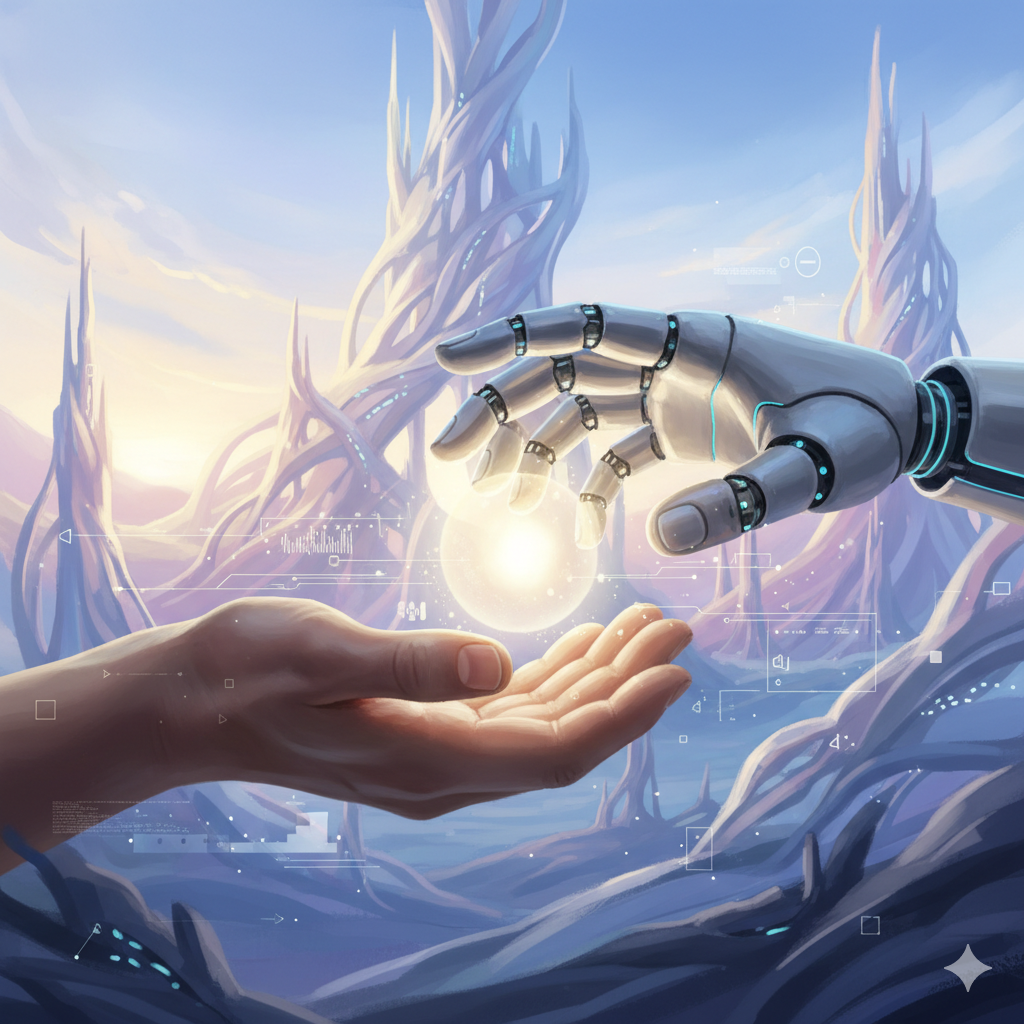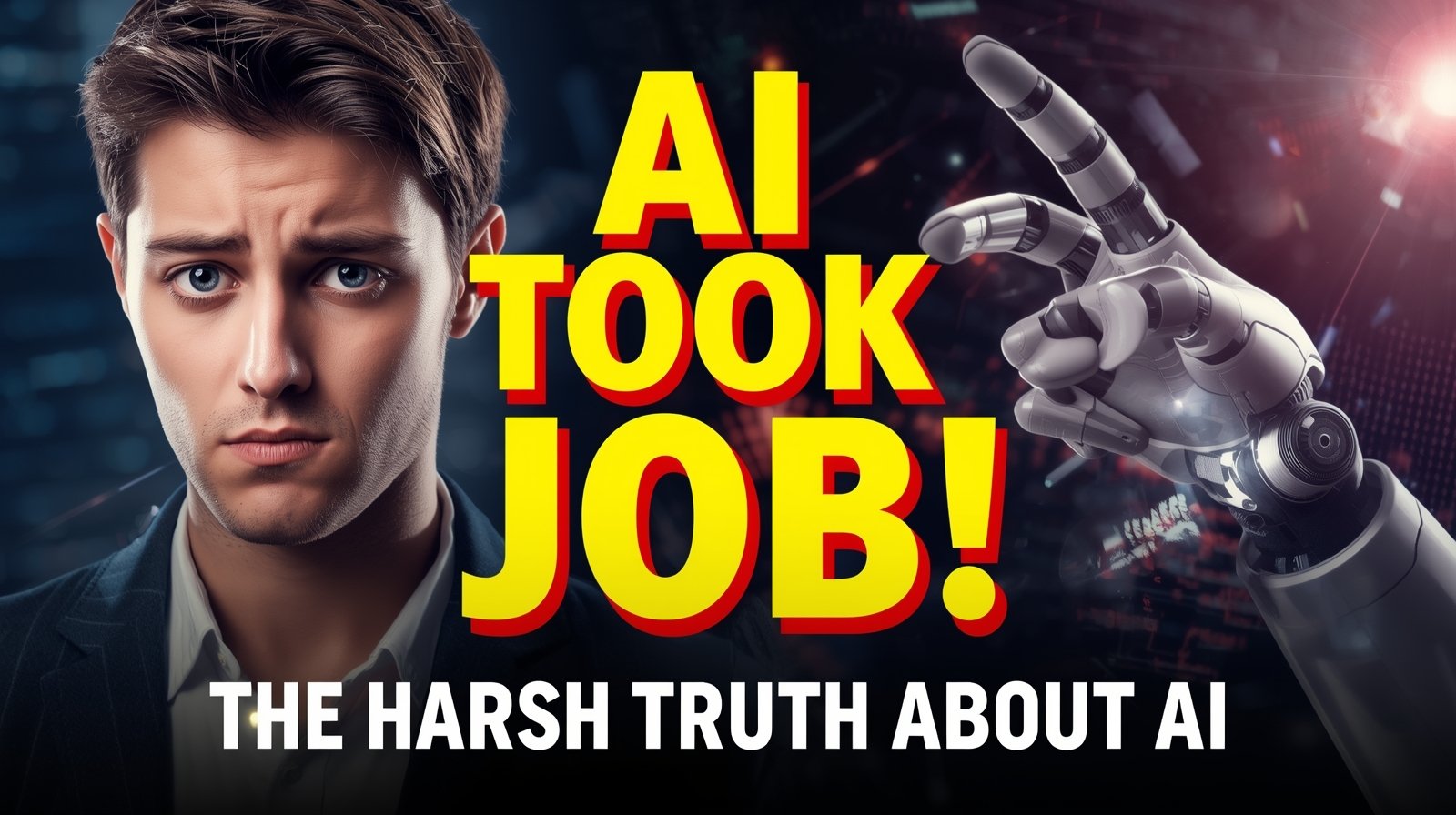AI Job Replacement: The Shocking Truth Behind America’s Tech Revolution
Table of Contents
The Viral Headline: “My Intern Was Replaced by an AI” {#viral-headline}
The story is everywhere. A manager at a mid-sized tech firm in Austin tweets, “We didn’t renew our marketing intern. ChatGPT and Jasper.ai now handle our blog and social media drafts.” A graphic design agency in New York quietly stops hiring junior designers, relying instead on Midjourney and DALL-E to generate initial concepts. This is the face of AI job replacement in America today. It’s not a sci-fi fantasy; it’s happening in real time, from coast to coast.
The initial reaction is often panic. Headlines scream about robots stealing jobs, and it’s easy to see why. But is the full story as bleak as it seems? Or is this a complex economic shift, much like the Industrial Revolution, that will ultimately reshape the American workforce in ways we are only beginning to understand? This blog post will dive deep into the reality of AI job replacement, separating fact from fear-mongering and providing a clear roadmap for not just surviving, but thriving, in this new era.

What is AI Job Replacement, Really? {#what-is-ai-replacement}
First, let’s define our terms. AI job replacement occurs when a task or an entire role previously performed by a human is fully automated by Artificial Intelligence, making the human worker redundant. However, this binary concept is often misleading. The more common and immediate reality is AI job augmentation.
Think of it this way:
- Replacement: An AI tool like an accounting software completely automates data entry, eliminating the need for a data entry clerk.
- Augmentation: A financial analyst uses that same AI tool to automate 80% of their data gathering and processing, freeing them up to focus on the 20% of their job that requires high-level strategy, interpretation, and client communication. The job hasn’t been replaced; it has been transformed.
The core of the AI job replacement debate in the USA isn’t just about machines versus humans. It’s about efficiency versus empathy, computation versus creativity, and automation versus critical thinking. The roles most vulnerable to full replacement are those built primarily around repetitive, predictable tasks. The roles that will evolve are those that require a distinctly human touch.
The Hard Data: Which American Jobs Are Most at Risk? {#hard-data}
Not all jobs are created equal in the eyes of an algorithm. Numerous studies, including influential ones from institutions like McKinsey Global Institute and the World Economic Forum, have identified patterns in which roles are most susceptible to AI job replacement.
High-Risk Categories Include:
- Data-Processing Roles: This includes jobs like data entry clerks, bookkeepers, and administrative assistants. AI excels at processing and organizing vast amounts of information faster and with fewer errors than humans.
- Repetitive Customer Service: Basic customer service queries are increasingly handled by sophisticated chatbots and AI-powered voice systems. This reduces the need for large teams of tier-1 support agents.
- Routine Content Creation: While AI won’t replace a visionary creative director anytime soon, it is already impacting roles like junior copywriters, technical writers, and transcriptionists. AI can generate basic reports, product descriptions, and even simple blog post drafts.
A recent report from Goldman Sachs sent shockwaves through the market by suggesting that AI could expose the equivalent of 300 million full-time jobs to automation globally. In the USA, this translates to a significant portion of the workforce needing to adapt their skill sets.
However, it’s crucial to understand that “exposure to automation” does not mean “immediate extinction.” It means the nature of these jobs will change dramatically.
It’s Not All Doom and Gloom: The New Jobs AI is Creating {#new-jobs}
For every job disrupted, the AI job replacement wave is creating new, often higher-value, roles. The tech revolution has always worked this way. The automobile replaced blacksmiths but created millions of jobs in manufacturing, auto repair, and highway construction. Similarly, AI is birthing entirely new career paths.
Emerging Job Titles in the Age of AI:
- AI Prompt Engineers: These professionals are experts at communicating with AI models. They craft the precise instructions (prompts) needed to generate high-quality text, images, and code. It’s less about coding and more about linguistics and creativity.
- Machine Learning Engineers: The architects behind the AI. They design, build, and deploy the complex algorithms that power everything from your Netflix recommendations to medical diagnosis tools.
- AI Ethics Specialists: As AI becomes more powerful, questions of bias, fairness, and privacy become paramount. These professionals ensure that AI systems are developed and used responsibly.
- AI Integration Managers: These are the project managers and consultants who help companies implement AI tools into their existing workflows, training staff and managing the transition.
The U.S. Bureau of Labor Statistics projects that employment in computer and information technology occupations is slated to grow much faster than the average for all occupations over the next decade, largely driven by demand in AI and data science.
The American Worker’s Survival Guide: How to Future-Proof Your Career {#survival-guide}
So, what can you, as an individual in the American workforce, do to ensure you remain relevant? The key is to stop competing with AI and start collaborating with it. Here’s your actionable survival guide.
1. Embrace the “Human Skills” (Soft Skills):
AI struggles with tasks that require emotional intelligence, critical thinking, and creativity. Double down on these inherently human strengths.
- Critical Thinking & Problem-Solving: Don’t just accept the AI’s output. Question it, analyze it, and use it as a starting point for deeper insight.
- Creativity & Innovation: AI can generate ideas based on existing data, but it cannot truly conceive a novel concept or a groundbreaking business strategy from scratch.
- Emotional Intelligence & Empathy: Leading a team, negotiating a deal, understanding a client’s unspoken needs—these require a human connection that AI cannot replicate.
2. Become AI-Literate:
You don’t need to become a programmer, but you must understand how to use AI tools effectively in your field.
- A marketer should learn to use tools like Jasper and ChatGPT to brainstorm campaigns, not just to write generic copy.
- A financial analyst should master AI-powered data analytics platforms to spot trends faster.
- A designer should use Midjourney to rapidly prototype concepts, saving time for the detailed, client-specific work.
3. Commit to Lifelong Learning:
The half-life of skills is shrinking. The mindset of “I learned my trade in college and I’m done” is a recipe for obsolescence.
- Use platforms like Coursera, edX, and Udemy to take courses on data literacy, AI fundamentals, and other emerging technologies.
- Attend industry webinars and workshops.
- Follow thought leaders in the AI and tech space on LinkedIn and Twitter.
4. Specialize:
Become the go-to expert in a niche that combines your human skills with AI augmentation. For example, instead of being a “writer,” become a “content strategist specializing in SEO and AI-powered content scaling.”
The Bigger Picture: AI and the Reshaping of the American Economy {#bigger-picture}
The AI job replacement trend is not happening in a vacuum. It is a central force in a larger economic transformation. For the United States to maintain its competitive edge, a multi-stakeholder approach is required.
- The Role of Government: There is a growing need for policy that supports workforce transition. This could include funding for retraining programs, modernizing unemployment insurance to support reskilling, and creating incentives for companies that invest in their employees’ AI education.
- The Role of Educational Institutions: Universities and colleges must overhaul their curricula to integrate AI literacy across all disciplines, not just computer science. The goal is to produce graduates who are ready to work alongside intelligent machines.
- The Role of Corporations: Businesses have a responsibility to their employees. Forward-thinking companies are investing in massive upskilling initiatives, understanding that it is more efficient to retrain a loyal employee than to fire them and hire a new one.
The conversation is shifting from simply preventing AI job replacement to managing a historic transition. The challenge is immense, but so is the potential for a more productive and innovative American economy.
Conclusion: Adapt or Get Left Behind {#conclusion}
The narrative that AI is simply a job-eating monster is a dangerous oversimplification. The reality of AI job replacement in America is far more nuanced. It is a powerful wave of automation, augmentation, and creation.
Yes, some jobs will disappear. This is an inevitable and painful part of technological progress. But in their place, new, more complex, and potentially more fulfilling roles will emerge. The central question of our time is not whether AI will change the workforce—it already is. The question is whether we are prepared to change with it.
The choice for every American professional is clear: see AI as a threat and resist it, or see it as the most powerful tool of our generation and learn to harness it. The future belongs not to those who are afraid of the machine, but to those who are skilled at steering it. The tech revolution is here. It’s time to adapt.







